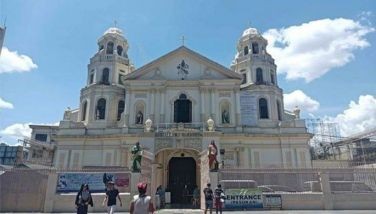‘No dumping of Metro wastes in Tarlac landfill’
July 16, 2004 | 12:00am
TARLAC CITY — The provincial government has reminded the state-run Clark Development Corp. (CDC) and the German consortium operating the sanitary landfill in Capas town that garbage from outside Tarlac and Clark, particularly Metro Manila, should not be dumped in the waste facility.
Gov. Jose Yap cited the provincial board’s Resolution No. 108, Series of 2003, which he said mandates, among other conditions, that only wastes from this province and the Clark special economic zone (CSEZ) should be disposed of in the sanitary landfill.
Yap made the declaration after learning that the German consortium, Metro Clark Wastes Management Corp. (MCWMC), has allegedly been allowing wastes from Metro Manila and adjoining provinces, particularly Bulacan, to be dumped in the 100-hectare landfill in Sitio Kalangitan, Capas town.
During a tree-planting activity at the landfill last July 10, Yap said he saw some dumptrucks marked with "MMDA," obviously referring to the Metropolitan Manila Development Authority.
The following day, upon Yap’s orders, the newly created Tarlac Task Force and Enforcement Unit-Provincial Composite Task Force (TTFEU-PCTF) intercepted two dumptrucks in Bamban town that were en route to the landfill.
The trucks were loaded with compounded sludge as well as steel scraps and asbestos from two Bulacan firms. The trucks are now impounded at the Bamban police station.
Prior to the landfill’s construction early last year, there had been numerous demonstrations due to reports that wastes from Metro Manila would eventually find their way to the facility.
Yap said opposition to the project waned only after the provincial board mandated that the landfill would only accept wastes from this province and the Clark ecozone.
Reacting to supposed claims by the project’s German proponents that it was necessary for them to open the facility to other areas to allow them to recoup their investments and pay the fees being imposed by the provincial government, Yap said, "They should have asked us first."
With five hectares of the total landfill site now in full operation, the facility can process 2,500 tons of garbage everyday.
But the MCWMC claimed that with the "small volume" of garbage coming from Tarlac and Clark, their current operations are only a "small fraction" of the facility’s full capacity.
Yap said that even if the landfill is within the Sacobia subzone of the Clark ecozone, its operations are still subject to existing local laws and ordinances.
For as long as the provincial board has not amended its resolution on the sanitary landfill, he said he will continue ordering law enforcers to prevent the dumping of garbage from outside Tarlac and Clark in the waste facility.
Gov. Jose Yap cited the provincial board’s Resolution No. 108, Series of 2003, which he said mandates, among other conditions, that only wastes from this province and the Clark special economic zone (CSEZ) should be disposed of in the sanitary landfill.
Yap made the declaration after learning that the German consortium, Metro Clark Wastes Management Corp. (MCWMC), has allegedly been allowing wastes from Metro Manila and adjoining provinces, particularly Bulacan, to be dumped in the 100-hectare landfill in Sitio Kalangitan, Capas town.
During a tree-planting activity at the landfill last July 10, Yap said he saw some dumptrucks marked with "MMDA," obviously referring to the Metropolitan Manila Development Authority.
The following day, upon Yap’s orders, the newly created Tarlac Task Force and Enforcement Unit-Provincial Composite Task Force (TTFEU-PCTF) intercepted two dumptrucks in Bamban town that were en route to the landfill.
The trucks were loaded with compounded sludge as well as steel scraps and asbestos from two Bulacan firms. The trucks are now impounded at the Bamban police station.
Prior to the landfill’s construction early last year, there had been numerous demonstrations due to reports that wastes from Metro Manila would eventually find their way to the facility.
Yap said opposition to the project waned only after the provincial board mandated that the landfill would only accept wastes from this province and the Clark ecozone.
Reacting to supposed claims by the project’s German proponents that it was necessary for them to open the facility to other areas to allow them to recoup their investments and pay the fees being imposed by the provincial government, Yap said, "They should have asked us first."
With five hectares of the total landfill site now in full operation, the facility can process 2,500 tons of garbage everyday.
But the MCWMC claimed that with the "small volume" of garbage coming from Tarlac and Clark, their current operations are only a "small fraction" of the facility’s full capacity.
Yap said that even if the landfill is within the Sacobia subzone of the Clark ecozone, its operations are still subject to existing local laws and ordinances.
For as long as the provincial board has not amended its resolution on the sanitary landfill, he said he will continue ordering law enforcers to prevent the dumping of garbage from outside Tarlac and Clark in the waste facility.
BrandSpace Articles
<
>
- Latest
- Trending
Trending
Latest
Trending
Latest
Recommended





























